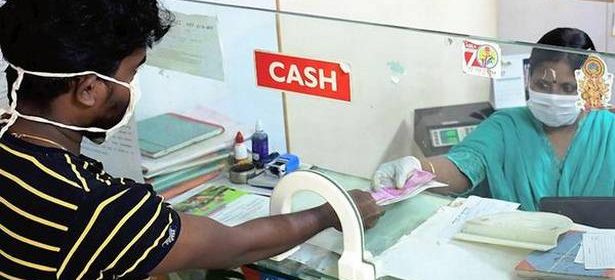‘GNPA ratio may rise up to 11.2% in FY22’

RBI sees banks’ gross NPA ratio climbing to 9.8% under baseline scenario, from 7.48% in March 2021
The gross non-performing asset (GNPA) ratio of India’s Scheduled Commercial Banks (SCBs) may climb by the end of the current fiscal year to as much as 11.2% under a severe stress scenario, from 7.48% in March 2021, the Reserve Bank of India (RBI) said in the Financial Stability Report released on Thursday.
“Macro stress tests indicate that the gross non-performing asset (GNPA) ratio of SCBs may increase… to 9.8% by March 2022 under the baseline scenario; and to 11.22% under a severe stress scenario, although SCBs have sufficient capital, both at the aggregate and individual level, even under stress,” the RBI said.
“The capital to risk-weighted assets ratio (CRAR) of SCBs increased to 16.03% and the provisioning coverage ratio (PCR) stood at 68.86% in March 2021,” the central bank said in its report.
Going forward, as banks respond to credit demand in a recovering economy, “they will need to reinforce their capital and liquidity positions to fortify themselves against potential balance sheet stress,” it added.
Sustained policy support, benign financial conditions and the gathering momentum of vaccinations were nurturing an uneven global recovery, the RBI noted.
“Policy support has helped in shoring up financial positions of banks, containing non-performing loans and maintaining solvency and liquidity globally,” it said.
“On the domestic front, the ferocity of the second wave of COVID-19 has dented economic activity, but monetary, regulatory and fiscal policy measures have helped curtail the solvency risk of financial entities, stabilise markets, and maintain financial stability,” it added.
“The dent on balance sheets and performance of financial institutions in India has been much less than what was projected earlier, although a clearer picture will emerge as the effects of regulatory reliefs fully work their way through,” Governor Shaktikanta Das wrote in his foreword to the report.
“Yet, capital and liquidity buffers are reasonably resilient to withstand future shocks, as the stress tests presented in this report demonstrate,” he added.
Mr. Das observed that even as the recovery was underway, new risks had emerged including “the still nascent and mending state of the upturn, vulnerable as it is to shocks and future waves of the pandemic; international commodity prices and inflationary pressures; global spillovers amid high uncertainty; and rising incidence of data breaches and cyber attacks”.
Sustained policy support and simultaneous increased fortification of capital and liquidity buffers by financial entities was therefore vital, he added.
He said even as India’s financial system remained on the front foot and prepared to intermediate in meeting the resource needs of an economy on the move, the priority was to maintain and preserve financial stability.
“In a situation in which economic activity has been disrupted by the pandemic, the financial system can take the lead in creating the conditions for the economy to recover and thrive,” Mr. Das remarked.
“Stronger capital positions, good governance and efficiency in financial intermediation can be the touchstones of this endeavour so that financing needs of productive sectors of the economy are met while the integrity and soundness of banks and financial institutions are secured on an enduring basis,” he added.
Source: Read Full Article
